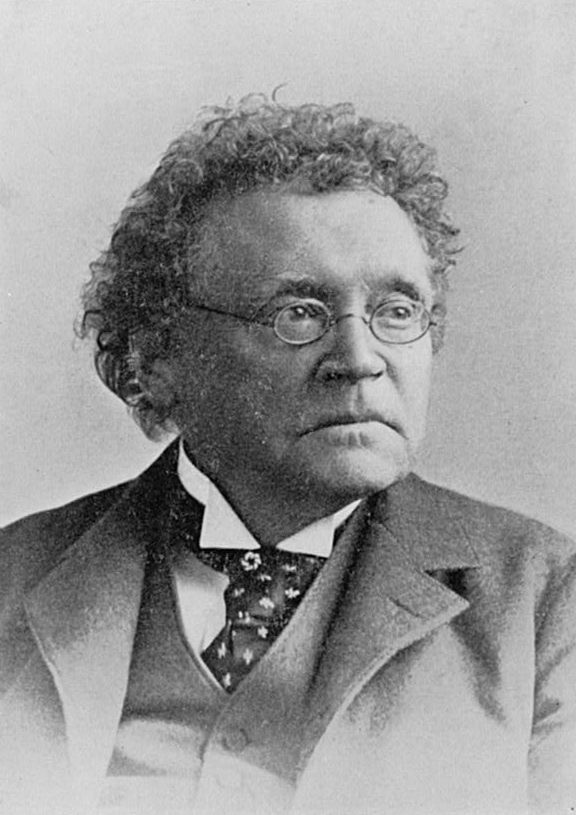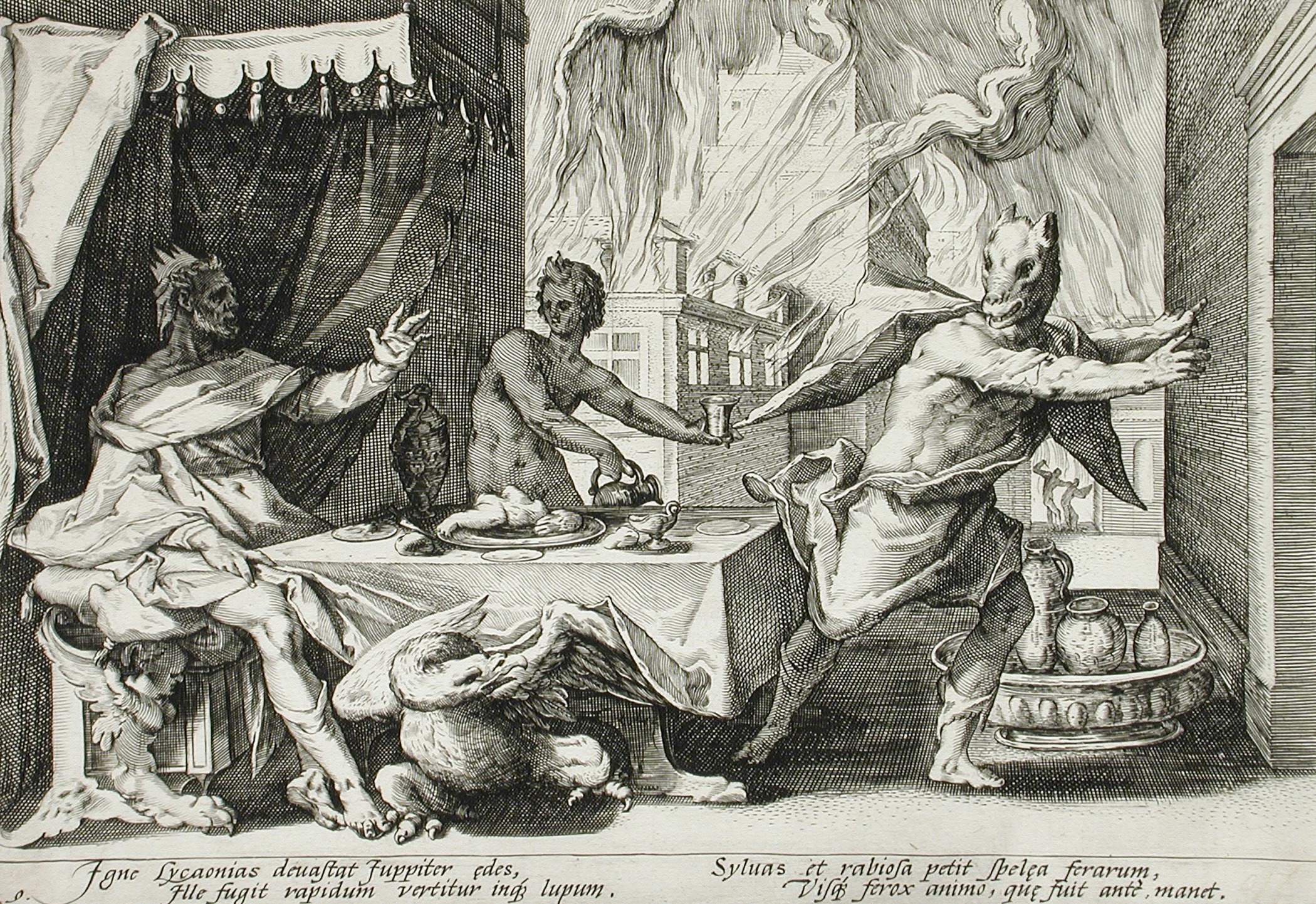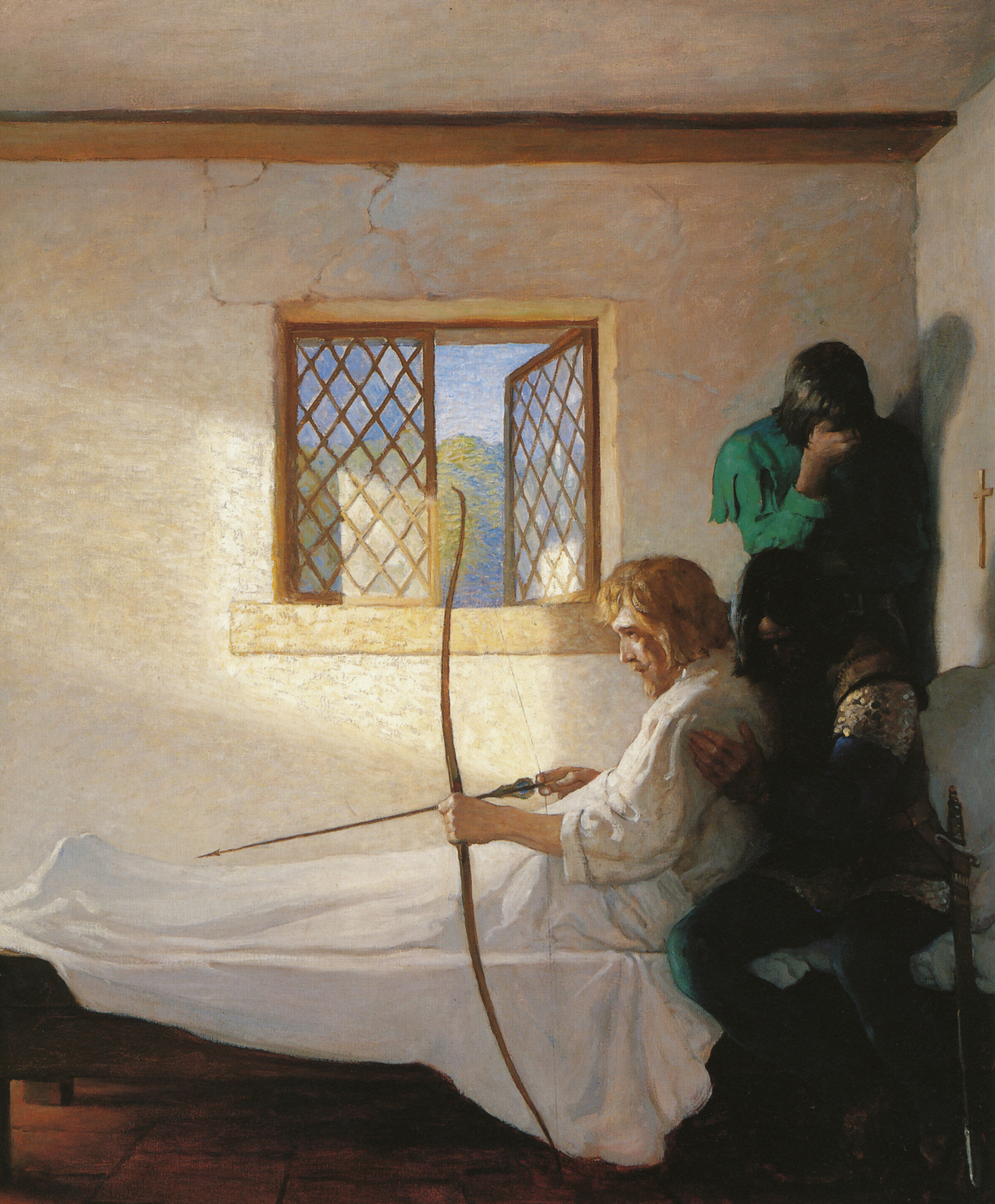|
The Earl Of Mar's Daughter
"The Earl of Mar's Daughter" (Roud 3879, Child 270) is an English-language folk song. Synopsis The Earl of Mar's daughter saw a lovely bird, and promised it a golden cage if it would come to her. It did, and that night transformed into a prince in her bedroom. His mother had transformed him to that form. They lived together; she bore seven sons, but the prince carried them safe to his mother. A wooer came for the daughter, and she said she did not want to marry but to live with her bird. Her father swore to wring its neck, and the prince fled. He got his mother to transform many of his men, his sons, and himself to larger birds, and they attacked the wedding party and bore away the bride. Variants Joseph Jacobs included a prose rendering of it, as ''Earl Mar's Daughter'', in his ''English Fairy Tales''. The ballad contains many fairy tale elements.Joseph Jacobs, ''English Fairy Tales''"Earl Mar's Daughter"/ref> The lover visiting in the form of a bird is a common motif i ... [...More Info...] [...Related Items...] OR: [Wikipedia] [Google] [Baidu] |
Roud Folk Song Index
The Roud Folk Song Index is a database of around 250,000 references to nearly 25,000 songs collected from oral tradition in the English language from all over the world. It is compiled by Steve Roud. Roud's Index is a combination of the Broadside Index (printed sources before 1900) and a "field-recording index" compiled by Roud. It subsumes all the previous printed sources known to Francis James Child (the Child Ballads) and includes recordings from 1900 to 1975. Until early 2006, the index was available by a CD subscription; now it can be found online on the Vaughan Williams Memorial Library website, maintained by the English Folk Dance and Song Society (EFDSS). A partial list is also available at List of folk songs by Roud number. Purpose of index The primary function of the Roud Folk Song Index is as a research aid correlating versions of traditional English-language folk song lyrics independently documented over past centuries by many different collectors across (especially) ... [...More Info...] [...Related Items...] OR: [Wikipedia] [Google] [Baidu] |
Child Ballads
The Child Ballads are 305 traditional ballads from England and Scotland, and their American variants, anthologized by Francis James Child during the second half of the 19th century. Their lyrics and Child's studies of them were published as ''The English and Scottish Popular Ballads''. The tunes of most of the ballads were collected and published by Bertrand Harris Bronson in and around the 1960s. History Age and source of the ballads The ballads vary in age; for instance, the manuscript of " Judas" dates to the thirteenth century and a version of " A Gest of Robyn Hode" was printed in the late fifteenth or early sixteenth century. The majority of the ballads, however, date to the seventeenth and eighteenth centuries. Although some are claimed to have very ancient influences, only a handful can be definitively traced to before 1600. Moreover, few of the tunes collected are as old as the words. Nevertheless, Child's collection was far more comprehensive than any previous ... [...More Info...] [...Related Items...] OR: [Wikipedia] [Google] [Baidu] |
Shape-shifting
In mythology, folklore and speculative fiction, shapeshifting is the ability to physically transform oneself through unnatural means. The idea of shapeshifting is found in the oldest forms of totemism and shamanism, as well as the oldest existent literature and epic poems such as the ''Epic of Gilgamesh'' and the ''Iliad''. The concept remains a common literary device in modern fantasy, children's literature and popular culture. Examples of shapeshifters are vampires and werewolves. Folklore and mythology Popular shapeshifting creatures in folklore are werewolves and vampires (mostly of European, Canadian, and Native American/early American origin), ichchhadhari naag (shape-shifting cobra) of India, shapeshifting fox spirits of East Asia such as the huli jing of China, the obake of Japan, the Navajo skin-walkers, and gods, goddesses and demons and demonesses such as the Norse Loki or the Greek Proteus. Shapeshifting to the form of a wolf is specifically known as lycanthropy, ... [...More Info...] [...Related Items...] OR: [Wikipedia] [Google] [Baidu] |
False Hero
The false hero is a stock character in fairy tales, and sometimes also in ballads. The character appears near the end of a story in order to claim to be the hero or heroine and is usually of the same sex as the hero or heroine. The false hero presents some claim to the position. By testing, it is revealed that the claims are false, and the hero's true. The false hero is usually punished, and the true hero takes their place. Vladimir Propp identified it as one of the seven roles he found in an analysis of Russian folktales, but the figure is widely found in many nations' tales. Traits In some tales, the false hero appears early, and constitutes the main obstacle to the hero. These include " The Goose Girl" where a serving maid takes the princess's place, and makes her a goose girl, " The White and the Black Bride" where the stepmother pushes the bride into the river and puts her own daughter in her place, and " The Lord of Lorn and the False Steward", where the steward robs the you ... [...More Info...] [...Related Items...] OR: [Wikipedia] [Google] [Baidu] |
Joseph Jacobs
Joseph Jacobs (29 August 1854 – 30 January 1916) was an Australian-born folklorist, literary critic and historian who became a notable collector and publisher of English folklore. Born in Sydney to a Jewish family, his work went on to popularise some of the world's best known versions of English fairy tales including " Jack and the Beanstalk", " Goldilocks and the Three Bears", " The Three Little Pigs", " Jack the Giant Killer" and " The History of Tom Thumb". He published his English fairy tale collections ''English Fairy Tales'' in 1890 and ''More English Fairy Tales'' in 1893. He published European, Jewish, Celtic, and Indian fairy tales, which made him one of the most popular English-language fairy tale writers. Jacobs was also an editor for journals and books on the subject of folklore which included editing the Fables of Bidpai and the Fables of Aesop, as well as articles on the migration of Jewish folklore. He also edited editions of '' The Thousand and One Nights''. ... [...More Info...] [...Related Items...] OR: [Wikipedia] [Google] [Baidu] |
Fairy Tale
A fairy tale (alternative names include fairytale, fairy story, household tale, magic tale, or wonder tale) is a short story that belongs to the folklore genre. Such stories typically feature magic, enchantments, and mythical or fanciful beings. In most cultures, there is no clear line separating myth from folk or fairy tale; all these together form the literature of preliterate societies. Fairy tales may be distinguished from other folk narratives such as legends (which generally involve belief in the veracity of the events described) and explicit moral tales, including beast fables. Prevalent elements include dragons, dwarfs, elves, fairies, giants, gnomes, goblins, griffins, merfolk, monsters, monarchy, pixies, talking animals, trolls, unicorns, witches, wizards, magic, and enchantments. In less technical contexts, the term is also used to describe something blessed with unusual happiness, as in "fairy-tale ending" (a happy ending) or "fairy-tale romance". ... [...More Info...] [...Related Items...] OR: [Wikipedia] [Google] [Baidu] |
The Bird Lover
The Bird Lover, also known as The Prince as Bird, is a type of narrative structure in folklore, no. 432 in the Aarne–Thompson classification system. In the typical version of story, a woman acquires a bird lover—a nobleman in the shape of a bird—who is wounded by means of a trap set by the woman's husband, such as a set of sharp points set up outside the woman's window. She follows the wounded bird's trail, cures him, and then marries him. In French scholarship, this type is often referred to as "''loiseau bleu''" or "the blue bird", so named for a story by Madame d'Aulnoy. Origins Folklorist Jack Haney traced the origins of the tale type to France and Germany in the Middle Ages.Haney, Jack V. ''The Complete Folktales of A. N. Afanas'ev''. Volume II: Black Art and the Neo-Ancestral Impulse. Jackson: University Press of Mississippi. 2015. pp. 536-556. An example of the motif is found in one of Marie de France's '' Lais'', " Yonec", though the lai develops somewhat differentl ... [...More Info...] [...Related Items...] OR: [Wikipedia] [Google] [Baidu] |
The Merry Adventures Of Robin Hood
''The Merry Adventures of Robin Hood of Great Renown in Nottinghamshire'' is an 1883 novel by the American illustrator and writer Howard Pyle. Pyle compiled the traditional Robin Hood ballads as a series of episodes of a coherent narrative. For his characters' dialog, Pyle adapted the late Middle English of the ballads into a dialect suitable for children. The novel is notable for taking the subject of Robin Hood, which had been increasingly popular through the 19th century, in a new direction that influenced later writers, artists, and filmmakers through the next century. Character The plot follows Robin Hood as he becomes an outlaw after a conflict with foresters and through his many adventures and run-ins with the law. Each chapter tells a different tale of Robin as he recruits Merry Men, resists the authorities, and aids his fellow man. The popular stories of Little John defeating Robin in a fight with staffs, of Robin's besting at the hands of Friar Tuck, and of his ... [...More Info...] [...Related Items...] OR: [Wikipedia] [Google] [Baidu] |
Howard Pyle
Howard Pyle (March 5, 1853 – November 9, 1911) was an American illustrator, Painting, painter, and author, primarily of books for young people. He was a native of Wilmington, Delaware, Wilmington, Delaware, and he spent the last year of his life in Florence, Italy. In 1894, he began teaching illustration at the Drexel Institute of Art, Science, and Industry (now Drexel University). Among his students there were Violet Oakley, Maxfield Parrish, and Jessie Willcox Smith. After 1900, he founded his own school of art and illustration named the Howard Pyle School of Illustration Art. Scholar Henry C. Pitz later used the term Brandywine School for the illustration artists and Wyeth family artists of the Brandywine region, several of whom had studied with Pyle. He had a lasting influence on a number of artists who became notable in their own right; N. C. Wyeth, Frank Schoonover, Thornton Oakley, Allen Tupper True, Stanley Arthurs, and numerous others studied under him. His 1883 classic ... [...More Info...] [...Related Items...] OR: [Wikipedia] [Google] [Baidu] |
Alan-a-Dale
Alan-a-Dale (first recorded as Allen a Dale; variously spelled ''Allen-a-Dale'', ''Allan-a-Dale'', ''Allin-a-Dale'', ''Allan A'Dayle'' etc.) is a figure in the Robin Hood legend. According to the stories, he was a wandering minstrel who became a member of Robin's band of outlaws, the "Merry Men". He is a relatively late addition to the legend; he first appeared in a 17th-century broadside ballad, Child Ballad 138, " Robin Hood and Allan-a-Dale", and, unlike many of the characters thus associated, managed to adhere to the legend. In this tale, Robin rescues Alan's sweetheart from an unwanted marriage to an old knight. They stop the bishop from proceeding with the ceremony, and Robin Hood, dressed in the bishop's robes, marries Alan to his bride. In other versions it is Little John or Friar Tuck who performs the ceremony.Holt, J. C. ''Robin Hood'' p 165 (1982) Thames & Hudson. Another variant appears in which the hero is not Alan but Will Scarlet, but Alan has taken over t ... [...More Info...] [...Related Items...] OR: [Wikipedia] [Google] [Baidu] |
The Brown Bear Of Norway
The Brown Bear of Norway is an Irish fairy tale collected by Patrick Kennedy which appeared in his ''Legendary Fictions of the Irish Celts'' (1866). It was later included by Andrew Lang in his anthology '' The Lilac Fairy Book'' (1910), though Lang misattributed his source as '' West Highland Tales'' (cf. The Brown Bear of the Green Glen). Others tales of this type include The Black Bull of Norroway, The Daughter of the Skies, East of the Sun and West of the Moon, The Enchanted Pig, The Tale of the Hoodie, Master Semolina, The Sprig of Rosemary, and White-Bear-King-Valemon. Synopsis A king in Ireland asked his daughters whom they wanted to marry. The oldest wanted the king of Ulster, the second the king of Munster, and the youngest the Brown Bear of Norway. That night, the youngest princess woke to find herself in a grand hall, and a handsome prince on his knees before her, asking her to marry him. They were married at once, and the prince explained that a witch had ... [...More Info...] [...Related Items...] OR: [Wikipedia] [Google] [Baidu] |
English Folklore
English folklore consists of the myths and legends of England, including the region's Legendary creature, mythical creatures, traditional recipes, urban legends, proverbs, superstitions, Folk dance, dance, balladry, and Folklore, folktales that have been passed down through generations, reflecting the cultural heritage of the country. This body of folklore includes a diverse array of characters, such as heroic figures like Beowulf or Robin Hood, legendary kings like King Arthur, Arthur, and mythical creatures like the Green Man (folklore), Green Man and Black Shuck. These tales and traditions have been shaped by the historical experiences of the English people, influenced by the various cultures that have settled in England over centuries, including Celtic Britons, Celtic, Romano-British culture, Roman, Anglo-Saxons, Anglo-Saxon, Norse mythology, Norse, and Normans, Norman elements. The stories within English folklore often convey themes of justice, loyalty, bravery, and the su ... [...More Info...] [...Related Items...] OR: [Wikipedia] [Google] [Baidu] |







